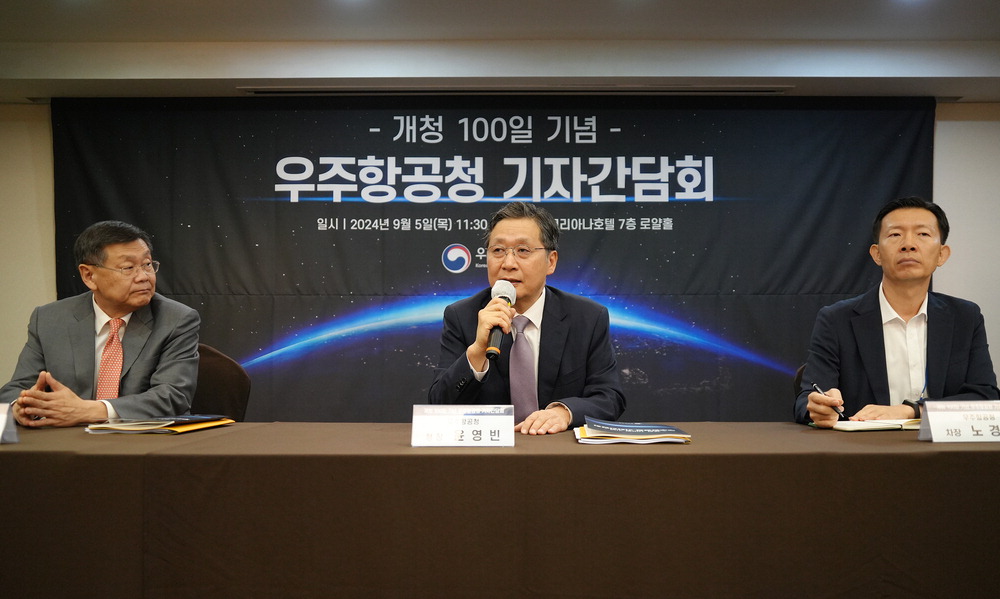SEOUL, South Korea — The chief of South Korea’s newly established space agency recently unveiled a set of ambitious mid- and long-term projects, including developing a partially reusable rocket capable of sending one kilogram of payload to low Earth orbit for less than $1,000 by the mid-2030s.
This is part of efforts to make South Korea one of the world’s leading space powers that claims a 10% global space market share by 2045, said Yoon Young-bin, administrator of the Korea Aerospace Administration (KASA), in a Sept. 5 press briefing. This event was held to mark the 100th day of the agency’s establishment. Other projects announced in the event include developing a robotic spacecraft that would observe the sun from the Earth-sun L4 Lagrange point by 2035; orbital transfer vehicles and reentry capsules; and very-high-resolution imaging satellites with a resolution of up to 10 centimeters. The briefing did not mention a Martian lander that South Korea’s president said in 2022 would be put on the Red Planet by 2045.
“We aim to reduce the cost of space transport to low Earth orbit to below $1,000 per kilogram,” Yoon said of the planned reusable rocket. “Including the reusable rocket, we will complete a transportation system that will allow us to travel freely between Earth and space by the 2030s.”
While the $1,000 per kilogram to LEO is much lower than the $6,000 for SpaceX Falcon 9 launches, the KASA chief didn’t elaborate on how to achieve this. He simply explained it would be done by applying technologies to “a rocket model that would best serve domestic satellite launch needs.” In May, Yoon said the reusable rocket would be designed to send up to 500 kilograms to low Earth orbit.
Yoon said a pilot study on orbital transfer vehicles and reentry capsules will begin next year, with the goal of making them operational by the 2030s. He emphasized the need to localize core technologies for high-resolution imaging satellites, electric thrusters for the formation flying of satellites, and their domestic mass production. South Korea is working to operate its own constellation of eleven small earth observation satellites in low Earth orbit by 2027, with the first satellite called NeonSat-1 launched in April aboard Rocket Lab’s Electron rocket.
Regarding the L4 Lagrange point mission, the KASA chief said the spacecraft will be developed through international cooperation.
“The goal is launching by 2035,” Yoon said. “We are in talks with the United States, Japan, the United Kingdom, and Germany on how to collaborate.”
Yoon’s presentation included a couple of initiatives aimed at nurturing domestic launch companies. The space agency will start procuring launch services for government satellites from 2027 and construct a launch pad for commercial launch vehicles near the Naro Space Center, the state-run spaceport in South Jeolla Province, by 2027.
On top of this, the KASA chief said he would visit NASA headquarters this month to discuss strategic partnership and would explore collaboration opportunities with a range of established and emerging spacefaring nations such as Japan, France, Greece, Germany, Saudi Arabia and the United Arab Emirates.
“We’re going to make the aerospace industry one of South Korea’s core industries that claims a 10% global market share by 2045,” Yoon said.
